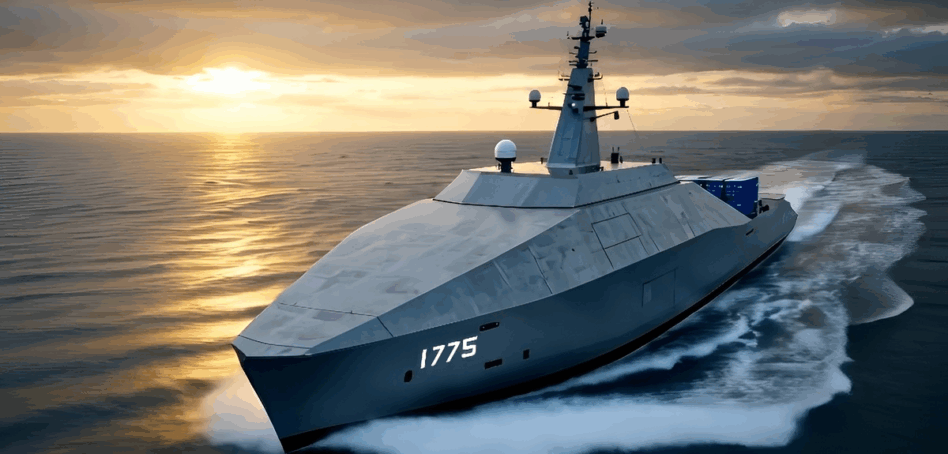There are a lot of startups out there making autonomous speedboats and small surface vehicles, but Blue Water Autonomy is thinking bigger: The newly launched maritime autonomy company is going all in on a 150-foot autonomous warship.
And it seems like investors like the idea. On Tuesday, just four months after emerging from stealth, the company announced that they’ve raised a $50M Series A led by Google Ventures with participation from existing investors Eclipse, Riot, and Impatient Ventures.
It’s a good time to be in the maritime autonomy space—just look at Saronic’s $392M Navy OTA.
Young guns: Boston-based Blue Water Autonomy launched in April with $14M in seed funding and an ambitious goal: They plan to have a full prototype of their 150-foot vessel in the water by next year.
The autonomous ship they’re building:
- Will run on BWA’s full-stack autonomy suite, which is currently being tested on a 100-foot-long ship.
- Is designed to travel thousands of miles at a time, which is critical for missions in the Indo-Pacific.
- Will be 100-150 feet long, oodles bigger than many of the smaller, speedboat-like sea drones on the market.
Show me the money: As you can imagine, building an autonomous ship half the length of a football field ain’t cheap. This new wad of cash will help take BWA from testing to prototype reality.
“We already have a 100-ton test vessel that we’re actively testing on salt water and in realistic conditions, but this infusion allows us to go build a whole unmanned ship and get it out to sea,” BWA co-founder and CSO Austin Gray told Tectonic. “That’s a much bigger undertaking.”
Google Ventures’ Managing Partner Dave Munichiello sees the vision—and knows the team. He worked with BWA co-founder and CEO Rylan Hamilton back at Kiva Systems and Amazon Robotics, and, as Gray put it, “Dave inherently understands what we’re doing, both with the robotics and through his own military background in the Air Force.”
Need for speed: The Navy wants unmanned surface vessels playing a bigger role in strike groups as early as 2027 (we see you, Davidson window). That’s no small task, but BWA sees opportunity in the urgency.
“The speed that the Navy expects right now is really impressive, and we’re starting to see a cultural shift in how the Navy buys ships,” Gray said. “For us to compete, as a small company, for a major program of record like MASC, we need to be able to build and deliver a full ship by next year. To do that, we needed to raise the capital.”
And lest we forget, the Big Beautiful Bill allocated a whole $2.1B to medium and large USVs. Seems like BWA is keeping a close eye on where the DoD’s priorities lie.
Mix it up: Gray, who spent time in a Ukrainian drone factory prior to starting BWA, is a firm believer in attritable mass—he sees small, cheap-to-lose USVs as critical to a hybrid fleet, but they need to be paired with bigger, long-haul ships, too.
“You need cost match-ups you can sustain, and you need things that are mass-producible,” he said. “In the Pacific, you can’t just add small USVs—you need stuff that can go long distances. I [am applying] what I saw in Ukraine, but at the range of the Pacific Ocean.”

